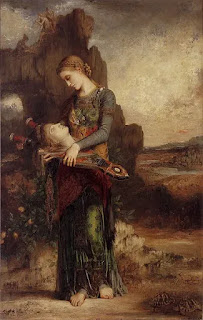The Fin de Siècle was a time of glittering beauty and pernicious darkness, with amazing social and technological progress creating both dizzying excitement and poisonous angst. In addition, the vitality of the period’s avant-garde art, music, and writing, and the beauty of its crafts, posters, and design aesthetics deeply appeal to me. So much so that, if I believed in so-called past lives, then I was a bohemian artist, writer, or journalist in the Fin de Siècle demimonde. Someone who died at a relatively young age without achieving fame.
On a more grounded note, my exploration of French Decadent literature has given me insight into a question I've had since I was young: What happened during a mere 20 years in Paris to transform the arts from Hugo-Zola-Monet-Rodin-Debussy to Gide-Proust-Matisse-Picasso-Satie? The starting and end points (Impressionism-Realism-Naturalism versus Twentieth Century Modernism) are well-defined, but the bridge between them feels obscure. A ‘missing link’, if you will.
I don’t know what I’ll do with the results of my French Decadence Project, but that’s okay. After dreaming up and working on many such Projects during my life, I’ve learned that I can never be sure where they will take me. Some bear unexpected fruit after years while others fizzle in a few weeks (if that).
Souhaite-moi bonne chance!
PS: Despite my use of British Decadent art in this post, I’m generally prejudiced against the British Decadents. Perhaps this is unfair since I haven’t read a lot of their work. However, there do not seem to be as many novelists among the British Decadents; most of them seem to be poets. Also, I can’t forgive Oscar Wilde - their most famous figure - for shamelessly ripping off J.K. Huysmans for The Picture of Dorian Gray. On the other hand, British Decadent art of the period – as well as art from other parts of Europe – align with the Movement’s aesthetics just as well as the French art does.




Comments
Post a Comment